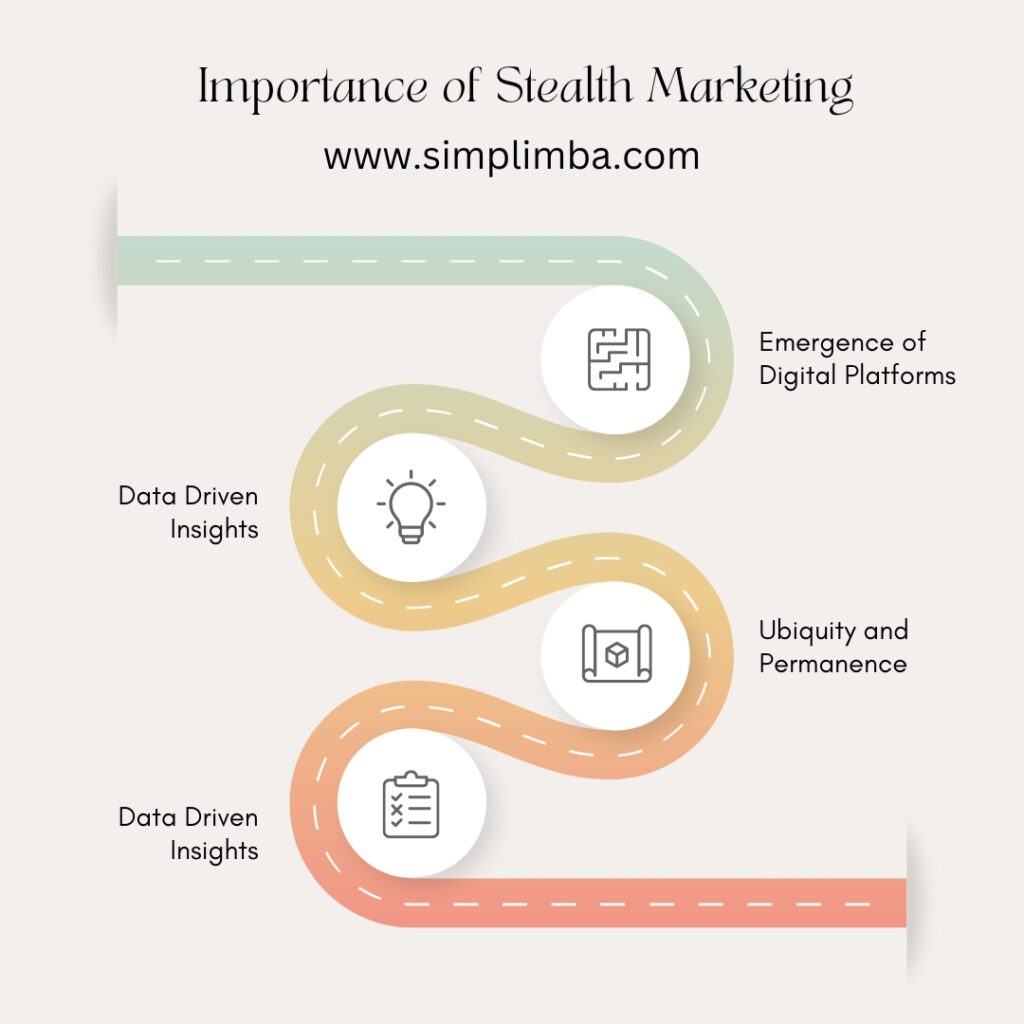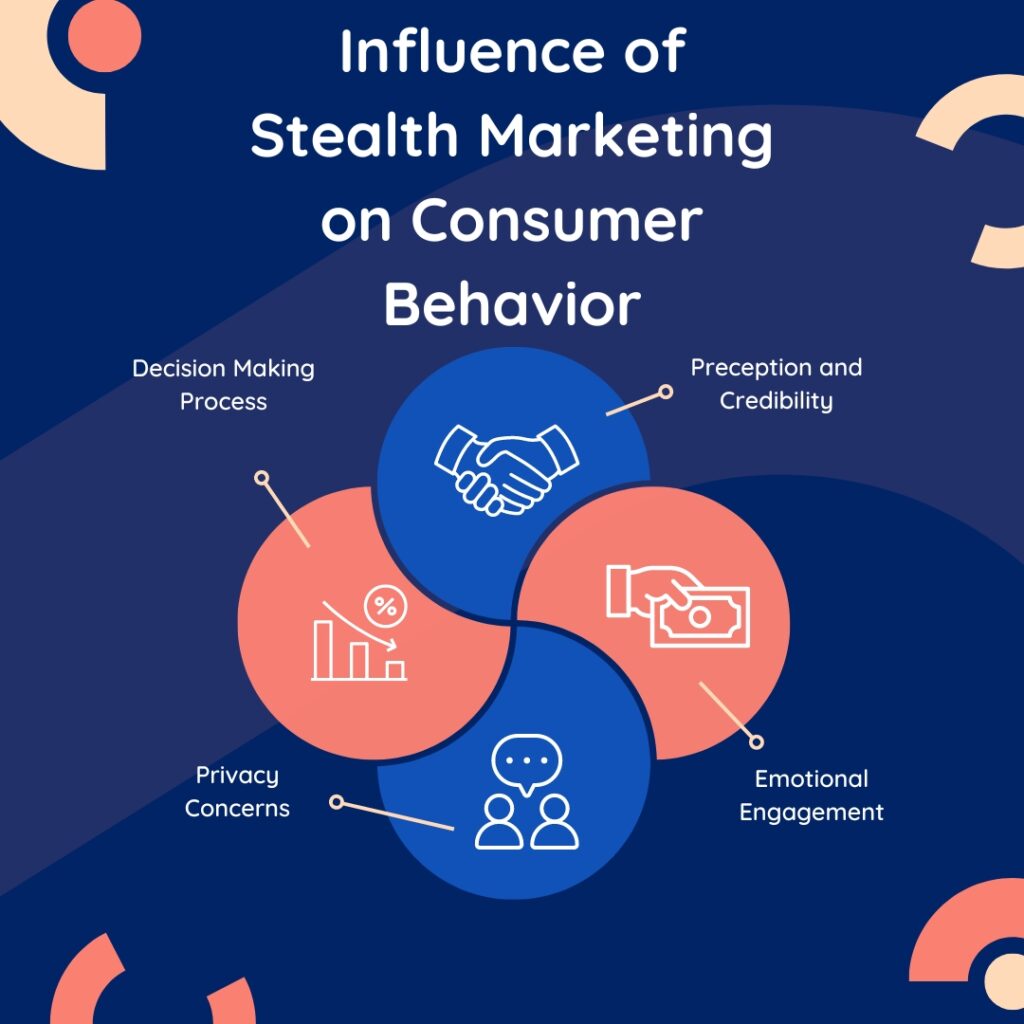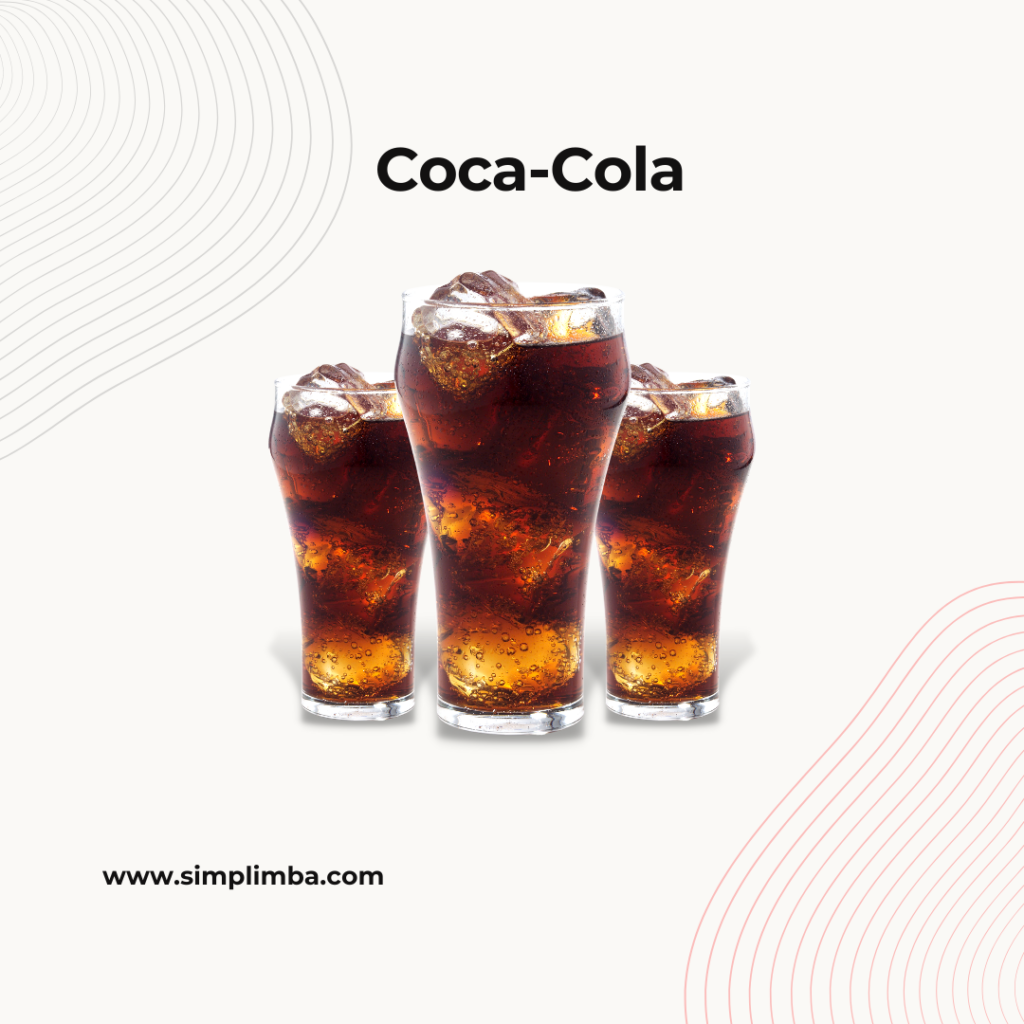Definition of Stealth Marketing
Stealth marketing is a strategy where a product or service is promoted without the consumer realizing they are being marketed to. This involves using unconventional techniques that often go unnoticed by consumers, such as product placements in movies, viral marketing, and undercover marketing. The goal is to create buzz and generate interest without the explicit mention of the product or service.
Brief Overview on Evolution of Stealth Marketing
The evolution of stealth marketing can be traced back to the growth of consumer skepticism towards traditional advertising. As consumers became more critical of overt promotions, marketers sought alternative methods to reach their target audience. Stealth marketing emerged as a response to this change in consumer behavior, exploiting the subtlety of indirect promotion.
Pre-internet Era:
Before the advent of the internet, stealth marketing was primarily seen in product placements in films and TV shows, or “undercover” promotions where marketers pretended to be regular customers to promote a product.
Internet Era:
With the rise of the internet, stealth marketing strategies adapted to the new medium. Viral marketing—marketing that relies on individuals to share messages—became a popular form of stealth marketing. Additionally, marketers began utilizing social media influencers as a stealth marketing tactic, often without disclosing the promotional relationship.
Modern Stealth Marketing:
As technology advanced, so did stealth marketing. Today, stealth marketing techniques include search engine optimization (SEO), content marketing, and native advertising—ads disguised as regular content. Furthermore, with advancements in artificial intelligence, personalized stealth marketing has become more prevalent.
Importance of Stealth Marketing in Today’s Digital Era

Emergence of Digital Platforms: In today’s digital era, the widespread use of digital platforms has become the new norm. Online platforms are not only used for communication and socialization but also business transactions, posing a great opportunity for marketers. Stealth marketing, in this case, can leverage these digital platforms to subtly advertise products or services without the consumers’ direct knowledge.
Data-Driven Insights: With digital platforms, stealth marketers can gather valuable data about consumer behavior, interests, and preferences. Such insights can be analyzed using algorithms and statistical methods to create personalized marketing strategies. This increases the potential effectiveness of stealth marketing campaigns.
Ubiquity and Permanence: Unlike traditional marketing methods, digital stealth marketing is ubiquitous and permanent. This means that once an advertisement or marketing strategy is launched online, it can reach a global audience and remain accessible indefinitely.
Cost-Effective: Stealth marketing is significantly cheaper than traditional marketing methods. The costs of launching ads on digital platforms are relatively lower, and the reach is far more widespread.
Influence of Stealth Marketing on Consumer Behavior

Perception and Credibility: Stealth marketing has a profound influence on consumer behavior. Because the marketing message is subtly integrated into content, consumers often perceive it as more credible and authentic. This can lead to increased consumer trust and a positive brand image.
Decision-Making Process: Stealth marketing can significantly influence the consumers’ decision-making process. By presenting the marketing message in an indirect and non-interruptive manner, it can subtly sway consumers towards making a purchase decision without them fully realizing they have been influenced.
Emotional Engagement: Stealth marketing often leverages storytelling or other engaging methods to connect with consumers on an emotional level. This emotional engagement can drive brand loyalty and higher conversion rates.
Consumer Privacy Concerns: However, stealth marketing can also raise concerns about consumer privacy. As stealth marketers gather and analyze consumer data to personalize their strategies, they must ensure they adhere to privacy regulations and ethical standards to maintain consumer trust.
7 Stealth Marketing Examples Unleashed
The Blair Witch Project’s Ground-Breaking Movie Marketing

Context and Strategy: The Blair Witch Project was an independent movie produced on a relatively small budget. The directors capitalized on the emergence of the internet as a marketing medium and created a website that presented the film’s plot as a real-life documentary, effectively blurring the lines between fact and fiction. This was an innovative use of digital storytelling which hadn’t been seen before.
Implementation and Reach: They published fabricated police reports, newsreels, and interviews online, which built audience intrigue and expectations for the film. It’s difficult to quantify the exact reach of this campaign, but the internet buzz significantly contributed to the film’s box office success.
Outcome and Impact: With an initial budget of around $60,000, the movie grossed nearly $250 million worldwide. This represents a staggering return on investment (ROI) and demonstrates the potential of viral marketing when implemented effectively.
Hotmail’s Email Revolution
Context and Strategy: Hotmail initiated one of the first examples of successful viral marketing on the internet. The strategy was brilliantly simple: appending a line to the bottom of every outgoing email that read “Get your free email at Hotmail” with a hyperlink to the Hotmail homepage.
Implementation and Reach: This strategy turned every Hotmail user into a marketer for the brand, as the promotional message was automatically included in every email sent. The exact reach of the campaign is difficult to quantify, but Hotmail rapidly accumulated millions of users shortly after its launch.
Outcome and Impact: Hotmail’s user base grew from zero to 12 million in just 18 months, largely thanks to this viral marketing strategy. The company was subsequently purchased by Microsoft for $400 million in 1997, less than two years after its launch. This demonstrates the significant commercial benefit that can be achieved through effective viral marketing.
Sony Ericsson: Street Buzz
Undercover marketing, or stealth marketing, involves promoting a product in a subtle and often non-traditional way without consumers realizing they are being marketed to. A prime example of this is the “Street Buzz” campaign launched by Sony Ericsson for its T68i mobile phone.
In this well-conceived marketing scheme, Sony Ericsson used actors instead of traditional salespeople. These actors would be stationed in highly frequented spots like tourist attractions, parks, and malls, posing as regular individuals. They would then ask passersby to take photos of them using the Sony Ericsson T68i. During the process, they would demonstrate the product’s features, particularly its built-in digital camera, which was a novelty at that time.
By focusing on the product’s user experience, the campaign generated word-of-mouth publicity and created an organic street buzz. According to published reports, this undercover marketing strategy significantly contributed to the T68i’s successful launch.
Furthermore, the effectiveness of this strategy can be evaluated by analyzing the sales data pre- and post-campaign. A visible spike in sales, directly correlating with the campaign period, would underline the success of the campaign. However, it’s essential to consider other factors that could influence sales, such as other marketing efforts, market trends, and competition.
Red Bull: Extreme Sports Sponsorship

Red Bull is another company synonymous with innovative marketing, particularly through its endorsement of extreme sports. Instead of traditional advertising methods, Red Bull’s strategy typically revolves around sponsoring extreme sports events or athletes who participate in these sports.
Red Bull’s strategy can be classified as undercover marketing because its logo subtly yet effectively permeates consumer consciousness during these high-adrenaline events. The company’s name and logo are not just visible on athletes’ gear but are often associated with the exciting and daring spirit of the sports they sponsor.
The impact of this strategy can be evaluated by the increase in brand awareness and brand image among the target demographic. Surveys or questionnaires can be used to measure these parameters before and after the events. If respondents report increased awareness or positive perception of Red Bull in the post-event survey, it would suggest the effectiveness of their marketing strategy.
Moreover, the number of viewers or attendees at the sponsored events, along with the sales data before and after these events, can be analyzed to measure the strategy’s effectiveness.
Nike: The Olympic Games Outplay

In the realm of marketing strategies, Nike’s “Olympic Games Outplay” is a classic example of ambush marketing. Ambush marketing refers to the deliberate attempt by a company to associate itself with a major event without being an official sponsor.
In the instance of the 1996 Atlanta Olympics, Nike, not an official sponsor, executed a brilliant ambush marketing strategy. Although Reebok was the official sponsor, Nike’s highly visible presence made many people believe they were the actual sponsor.
This was achieved by opening a Nike World showcase near the athlete’s village, sponsoring press conferences with Nike athletes, and running a billboard campaign featuring Olympic athletes. The most memorable part of the campaign was their billboard that read “You don’t win silver, you lose gold.”
To analyze the effectiveness of this strategy, we could collect data on brand recognition and consumer sentiment before and after the Olympic games. A comparison of these metrics could provide evidence of the impact of Nike’s ambush marketing efforts. For example, an increase in brand recognition or positive consumer sentiment post-Olympics could be attributed to Nike’s marketing strategy.
Beats: The Subtle Olympic Winner
Another noteworthy example of ambush marketing comes from Beats Electronics during the 2012 London Olympics. Despite not being an official sponsor, Beats succeeded in increasing its brand visibility through a clever marketing strategy.
Beats sent their high-end headphones, branded with national colors, to high-profile athletes who were seen wearing them during the games. The widespread television coverage and social media exposure that resulted from this strategy enabled Beats to associate their brand with the Olympics, even though they were not an official sponsor.
A potential research approach to measuring the success of Beats’ strategy could involve tracking sales of Beats headphones pre and post-Olympics. An increase in sales post-Olympics could be indicative of the success of their ambush marketing strategy.
Furthermore, conducting a sentiment analysis on social media posts mentioning Beats during the Olympics could provide additional insights into the impact of their strategy on brand perception. For instance, positive sentiment associated with Beats and the Olympics may suggest that their strategy was effective in generating positive brand associations.
Coca-Cola: Happiness Machine

Coca-Cola’s “Happiness Machine” was one of the most successful experiential marketing campaigns that the brand has executed. Coca-Cola installed a vending machine at a university campus, but it wasn’t an ordinary vending machine. When students inserted money, the machine started dispensing free bottles of Coke, along with other surprise gifts such as balloon animals, pizzas, and sandwiches.
Analysis
Engagement: This campaign was highly engaging as it stirred curiosity among the students and created a memorable experience. It also encouraged social sharing as students started filming the event and sharing it on their social media platforms.
Emotional Connection: By creating a unique, joy-filled experience, Coca-Cola established a powerful emotional connection with the target audience. The brand successfully reinforced its image as a bringer of happiness.
Virality: The happiness machine campaign became a viral sensation, with the YouTube video garnering millions of views. Therefore, the campaign not only reached the students at the campus but also a worldwide audience.
IKEA: Sleepover Event
IKEA’s “Big Sleepover” event is another example of successful experiential marketing. The brand invited 100 customers for a sleepover at their warehouse in the UK. The attendees were treated to a night of movies, manicures, and bedtime stories. They were also allowed to choose any bed and bedding of their choice for the sleepover.
Analysis:
Engagement: The campaign effectively created a unique, immersive experience that involved the customers physically and emotionally. It allowed customers to interact with the products firsthand, thus increasing product awareness.
Emotional Connection: By hosting a sleepover, IKEA created a homely, comfortable environment for its customers, thus forging a strong emotional connection. The event reinforced IKEA’s brand promise of creating a better everyday life for many people.
Publicity: The sleepover event gained significant media attention, with numerous news outlets covering the event. This boosted IKEA’s visibility and appeal among a broader audience.
Both these campaigns demonstrate how well-planned and well-executed experiential marketing strategies can create meaningful customer engagement, forge strong emotional links, and increase brand visibility. The success of these campaigns also underlines the potential of experiential marketing in shaping consumer perceptions and attitudes toward the brand.
LEGO: The Building Blocks of Storytelling
Overview and Background: LEGO, a Danish toy production company, is renowned for its successful content marketing approach. The company’s primary content marketing strategy is based on storytelling, which has allowed it to engage and connect with customers on a deeper level.
Methodology: To evaluate LEGO’s content marketing strategy, a qualitative content analysis of the brand’s marketing campaigns, social media platforms, and customer interaction strategies would be conducted. Primary data would be gathered through these sources and would be supplemented, if necessary, with secondary data from existing research.
Storytelling Strategy: LEGO has mastered the art of storytelling by creating content that is not just about their products, but about the experiences, adventures, and creativity they inspire. This approach fosters an emotional connection with the audience, which is crucial in brand perception and loyalty.
Evidence from Campaigns: The ‘Build the Change’ campaign, for example, invited children worldwide to use LEGO bricks to build their vision of a sustainable future. This campaign not only promoted the product but also engaged children in meaningful discussions about sustainability.
Impact and Results: The success of LEGO’s content marketing can be measured by its strong brand loyalty, high market share, and positive brand perception. A statistical analysis could further quantify the impact of storytelling on sales and customer retention.
GoPro: User-generated Content Magic
Overview and Background: GoPro, a manufacturer of action cameras, has revolutionized content marketing by leveraging user-generated content (UGC). They have effectively created a community where customers are also creators.
Methodology: Similar to the LEGO case, a detailed content analysis will be conducted, focusing on GoPro’s marketing campaigns, social media platforms, and the nature of the UGC they generate. Primary data would be collected from these sources, supplemented by secondary data if required.
User-Generated Content Strategy: GoPro encourages its users to capture and share their adventures using GoPro cameras. This strategy not only promotes the product’s capabilities but also authenticates the brand by showcasing real-life experiences of customers.
Evidence from Campaigns: One of the prominent examples is the GoPro HERO7 Black campaign, where customers were invited to share their videos for a chance to win up to $1 million. This campaign generated millions of social shares and interactions, thereby increasing brand visibility.
Impact and Results: GoPro’s strategy has led to high levels of customer engagement, brand visibility, and advocacy. The success can be quantified by analyzing metrics like customer engagement rates, social shares, and the volume of UGC.
Cadbury: Gorilla Drummer Ad
Background: Cadbury, founded in 1824, is a British multinational confectionery company wholly owned by Mondelez International. It is known for its Dairy Milk chocolate. In 2007, Cadbury launched a new advertisement, known as the “Gorilla Drummer Ad,” as a part of their “Glass and a Half Full Productions” campaign. This advertisement was an excellent example of Guerrilla Marketing.
The “Gorilla Drummer Ad”: This advertisement, which lasts for 90 seconds, does not feature any chocolates. Instead, it focuses on a gorilla passionately drumming to the song “In the Air Tonight” by Phil Collins. The ad concludes with the gorilla hitting the drum’s climax, followed by the Cadbury logo and the tagline “A glass and a half full of joy.” This ad was a deviation from traditional confectionery advertising, which focuses on the product and its taste.
Guerrilla Marketing Concept: Guerrilla Marketing is an innovative, unconventional, and low-cost marketing technique aimed at obtaining maximum exposure for a product. It relies heavily on creativity and originality rather than a big budget. Cadbury’s Gorilla Drummer Ad fits the Guerrilla Marketing concept due to its originality and ability to capture audience’s attention without directly mentioning the product.
Impact Analysis: The ad was a resounding success. It not only boosted sales but also won numerous advertising awards. According to Nielsen, Cadbury’s Dairy Milk sales increased by 9% in the year following the campaign, and Cadbury attributed a 5% rise in sales directly to the ad. The ad was successful in creating a strong emotional connection with its audience through its unique approach.
Samrat is a Delhi-based MBA from the Indian Institute of Management. He is a Strategy, AI, and Marketing Enthusiast and passionately writes about core and emerging topics in Management studies. Reach out to his LinkedIn for a discussion or follow his Quora Page

